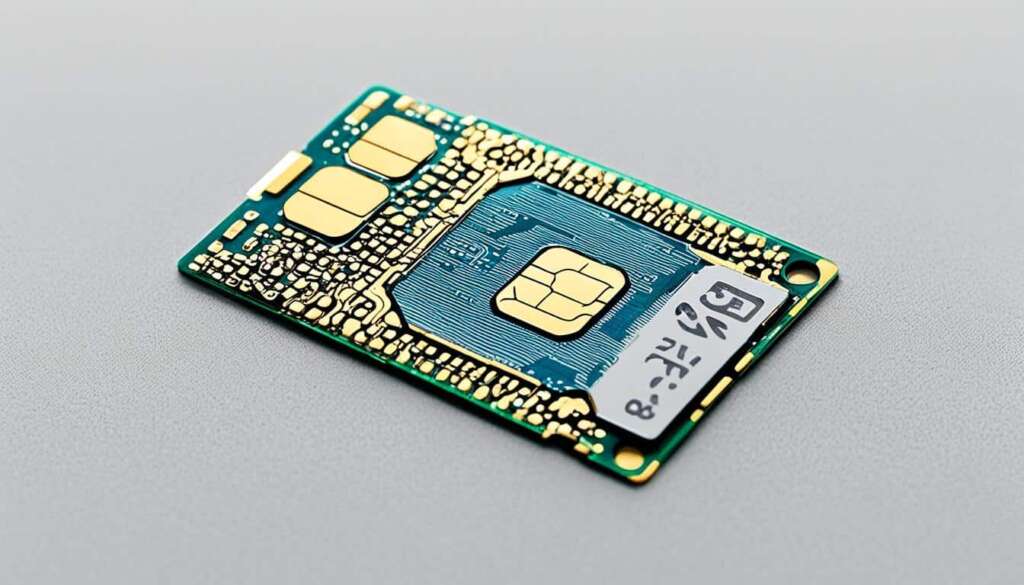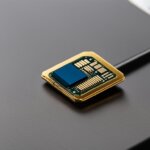Table of Contents
A SIM card, or subscriber identity module, plays a crucial role in enabling communication between a mobile phone and a mobile network. It is a small plastic chip inserted into your phone that connects it to the network, allowing you to make calls, send text messages, and access mobile internet services.
The SIM card holds unique identification information, such as the International Mobile Subscriber Identity (IMSI), which identifies your phone to the network. It was first developed by Giesecke & Devrient in 1991 and has since become widely used, with over 7 billion devices across the globe connecting to mobile networks.
There are three main SIM card formats: standard, micro, and nano. While they differ in size, they all serve the same purpose and hold the same type of information. Additionally, there is a reprogrammable chip called an eSIM that is integrated into devices, allowing for easy updates or changes without the need for physical removal.
When it comes to using a SIM card, it’s important to understand the different sizes and types available, the functions and security of the SIM card file components, as well as the benefits and features they offer. By gaining a comprehensive understanding of SIM cards, you can make informed decisions regarding their activation and usage, ensuring a seamless mobile experience.
Different SIM Card Sizes and Types
SIM cards come in various sizes and types, including standard, micro, nano, and embedded SIM (eSIM). Each size caters to different device requirements and offers unique advantages.
Standard SIM Card
The standard SIM card is the largest and measures approximately 25mm x 15mm. It was the standard form factor for many years but is now less commonly used. Some older devices still require a standard SIM card.
Micro SIM
The micro SIM is smaller than the standard SIM and measures approximately 15mm x 12mm. It became popular when smartphones started using smaller SIM cards. Many mid-range devices still use micro SIM cards.
Nano SIM
The nano SIM is the smallest SIM card size and measures approximately 12.30mm x 8.80mm. Most modern smartphones, including the latest iPhone and Android models, require a nano SIM.
Embedded SIM (eSIM)
The embedded SIM, or eSIM, is a chip embedded within the device’s structure. It eliminates the need for a physical SIM card. The eSIM is significantly smaller than the nano SIM, measuring just a few millimeters. It is compatible with certain devices, such as the Apple iPhone XS and Google Pixel 3.
All SIM card sizes, whether standard, micro, nano, or eSIM, hold the same type of information and function in the same way. They establish a connection between the mobile device and the mobile network, enabling communication and access to various cellular services.
The Function and Security of SIM Card File Components
SIM cards are equipped with file components that play a crucial role in managing and organizing the data stored on the card. At the top level, we have the Master File (MF), which acts as the root directory, providing the necessary structure for managing other file components. This hierarchy ensures seamless functionality and efficient data management.
Specific directories called Dedicated Files (DF) house files designated for different functionalities, such as phonebook entries or SMS messages. These dedicated files facilitate easy access and organization of important data and enable smooth interaction with the mobile network.
Within the file system, we find Elementary Files (EF), which are the smallest data storage components. They house specific types of data, such as the International Mobile Subscriber Identity (IMSI) or the Integrated Circuit Card Identifier (ICCID). The elementary files serve as the building blocks of the SIM card and contain essential information necessary for the card’s functionality.
Understanding the file components of a SIM card is not only fundamental to comprehend how the technology works, but also crucial for examining the security and privacy features it offers. SIM cards come equipped with robust security measures, including Personal Identification Numbers (PINs), Personal Unlocking Keys (PUKs), authentication keys, and encryption techniques. These security features work together to safeguard user information and protect it from unauthorized access.
In terms of physical security, the embedded SIM (eSIM) takes the lead. Its integration into the device’s circuitry makes it considerably more secure than other form factors. With an eSIM, the risk of being tampered with or removed is greatly reduced, further enhancing user data protection.
For enhanced SIM card security, implementing secure elements (SE) and comprehensive authentication protocols can add additional layers of protection. These measures contribute to creating a robust security environment for the SIM card, ensuring secure and reliable cellular connectivity.
Simultaneously, SIM cards offer numerous benefits, including global coverage, built-in authentication mechanisms, and secure connectivity. Through remote provisioning, SIM profiles can be managed over the air, simplifying device management and offering greater flexibility.
The choice of the right SIM card form factor depends on various factors, such as industry requirements, device specifications, durability, and the need for remote management capabilities. By considering these factors, one can select the most suitable SIM card that aligns with the specific needs of the industry and ensures efficient and secure connectivity.
FAQ
What is a SIM card?
A SIM card, or subscriber identity module, is a small plastic chip inserted into a mobile phone to enable communication with a mobile network.
What does a SIM card do?
SIM cards connect the phone to the network and allow users to make calls, send text messages, and access mobile internet services.
What information does a SIM card hold?
SIM cards hold unique identification information, such as the International Mobile Subscriber Identity (IMSI), which identifies the phone to the network.
When was the first SIM card invented?
The first SIM card was invented in 1991 by Giesecke & Devrient and has since become widely used, with 7 billion devices connecting to mobile networks globally.
What are the different types of SIM cards?
The three main SIM card formats are standard, micro, and nano. They differ in size but hold the same type of information.
What is an eSIM?
An eSIM is a reprogrammable chip integrated into devices, allowing for easy updates or changes to the information it holds without needing to physically remove the card.
How do I know which SIM card size I need?
SIM card size depends on the device, and the user manual or manufacturer’s website can provide information on the required size.
How do I insert or remove a SIM card?
The method to remove or insert a SIM card varies depending on the device, but it is important to turn off the device before handling the SIM card.
What are the different SIM card sizes?
SIM cards come in various sizes and types, including standard, micro, nano, and embedded SIM (eSIM). The standard SIM card is the largest, followed by the micro SIM, and then the nano SIM, which is the smallest.
What is an eSIM?
An eSIM, or embedded SIM, is a chip integrated into the device’s structure and does not require physical removal or replacement.
What are the benefits of using a SIM card?
SIM cards offer benefits such as global coverage, built-in authentication, and secure connectivity, making them essential for cellular connectivity.
How are SIM cards secured?
SIM card security features include PINs, PUKs, authentication keys, and encryption techniques to protect user information.
What are SIM card file components?
SIM cards contain file components that manage and organize the data stored on the card, including the Master File (MF), Dedicated Files (DF), and Elementary Files (EF).
What is the function of the Master File on a SIM card?
The Master File (MF) is the top-level file component and acts as the root directory, providing the structure for managing other file components.
What are Dedicated Files on a SIM card?
Dedicated Files (DF) are specific directories that contain files for different functionalities, such as phonebook entries or SMS messages.
What are Elementary Files on a SIM card?
Elementary Files (EF) are the smallest data storage components and store specific types of data, such as the ICCID or IMSI.












